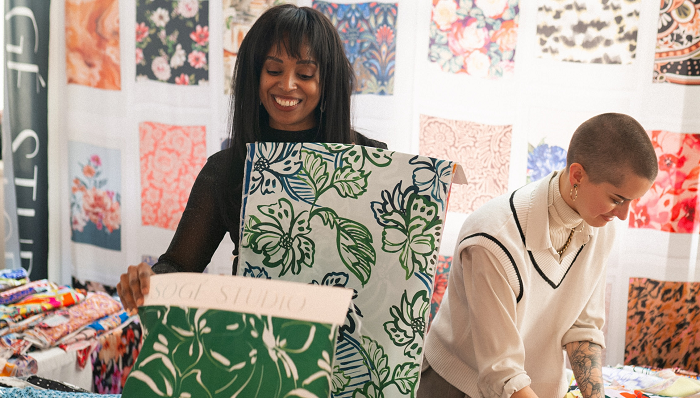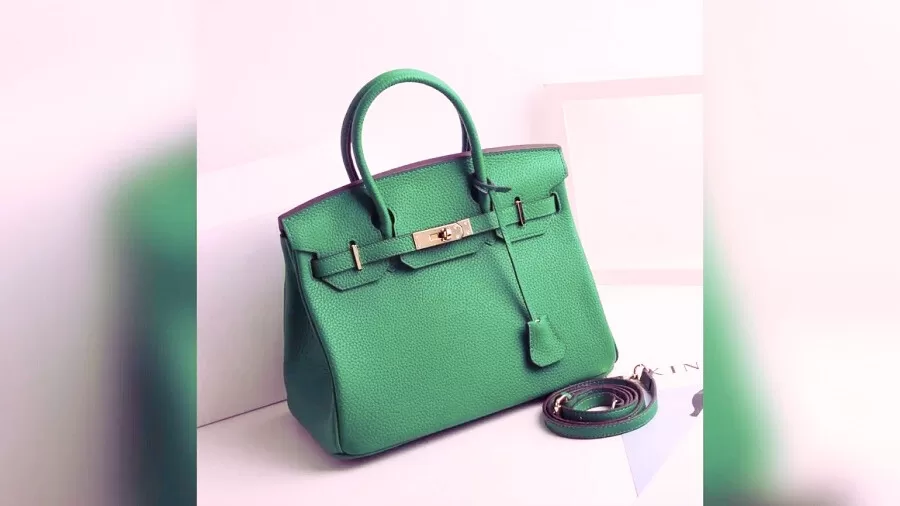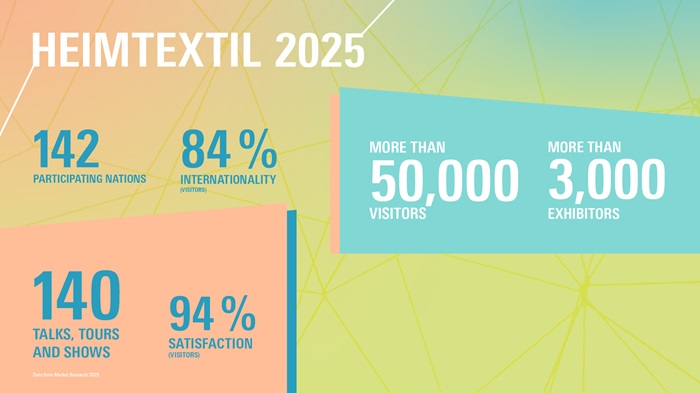FW
Bowing down to pressure from apparel exporters in Bangladesh, the government has asked the National Board of Revenue (NBR) to lower the tax on apparel and textile exports from the existing 0.8 per cent to 0.3 per cent. Garment manufacturers and exporters from the country will enjoy the benefit of the tax reduction till June 2015. The lowering of the tax would cost the NBR about Tk 10 billion in revenue.
Last month, the Bangladesh finance minister had announced the decision to lower the tax rate on apparel exports from 0.8 per cent to 0.65 per cent. However, readymade garment manufacturers and exporters were disappointed with the rate and appealed to the government to lower it further to 0.25 per cent.
During the first five months of the current fiscal, exports of readymade garments from Bangladesh increased by 20.73 per cent. However, the country’s apparel sector has been facing severe issues in recent months due to the political unrest and garment manufacturers of the country have stated that business had slowed down significantly due to severe disruptions in transportations.
Bangladesh’s garment exports to Japan is rising, due to a favorable trade policy and rising demand. In particular there is a strong demand in for denim from Bangladesh. In 2008 , Japan decided to reduce its dependency on China world’s the largest garment supplier. Many Chinese manufacturers were failing to carry out orders because of a shortage of labor, higher wages and continuous labor unrest. Japan started looking for competitive prices. The policy promoted a shift from China to other nations such as Bangladesh. The Japanese government relaxed the ‘Rules of Origin’ on April 1, 2012. Bangladesh knitwear exports to Japan now stand at around $500 million, having gone up from $100 million a few years ago.
Japanese buyers have started outsourcing standard, low-end knitwear and woven wear products. This change in buyers’ sourcing strategy is primarily related to changes in Japanese consumers’ demand arising from structural changes in the job market and changes in the demographic structure of Japan.
Being a member of the least-developed countries' group, Bangladesh has duty-free access to Japan for woven products. The Japanese apparel market is worth more than $35 billion a year and Bangladesh hopes to capture a significant share.
The first edition of Première Vision Istanbul will be held from October 29 to 31, 2014. It will follow the format of all Première Vision shows and be a biannual event. Its aimed at fashion professionals from Eastern Europe and the Middle East.
Première Vision Istanbul, a premium textile show, will present a vast selection of textiles and materials such as fabrics, yarns, accessories and services such as textile designs. The exhibitors have been selected by a committee of adhoc industry professionals, and comprises both Turkish and international companies. Based on the Première Vision show concept, specific services and fashion information adapted to the area's markets will also be established.
Turkey has emerged as one of the most dynamic countries, at the crossroads of Europe and Asia. It is also an important player in the global fashion industry, thanks to a strong textile industry and which is vertically integrated from production of raw materials to garment manufacturing and rich in manufacturing know-how. Istanbul, the capital, has emerged as a regional fashion and market centre for Eastern Europe and Asia.
Première Vision, a subsidiary of the Association Première Vision and the GL Events Group, organises 30 shows throughout the world.
www.premierevision.com/en/Organization/Offices
The collapse and fire damage to garment factories in Bangladesh and poor working conditions of garment factory workers in Asian countries as well as toxic chemicals used in fabric production are driving global brands’ interest in ethical fashion. Their rising interest is also boosting its appeal to a broader market.
Labour unrest due to precarious work atmosphere in Asian factories supplying to some of the big global brands along with pressure being created by vocal campaigns from environmental groups like Greenpeace is leading brands to stop using chemicals, which they say can pollute rivers near factories and threaten the health of workers and consumers. Awareness of these issues has helped ethical fashion start to shake off its reputation as a niche sector, said Olaf Schmidt, organizer of the Ethical Fashion Show in Berlin.
Growing consumer interest is underlined by the number of brands showcasing their wares at the Ethical fashion show at Berlin this year. The number has increased to 116 from 36 when the show was launched two years ago. Last year witnessed 85 exhibitors. The January 14-16 show, part of Berlin fashion week, features brands which use organic cotton, wool and bamboo or alternative materials such as recycled leather and plastic, and pledge to improve pay and conditions for farmers and garment workers.
Recent market research by Mintel shows consumers seek quality over price when shopping for clothes in Britain, France, Germany, Italy and Spain. Mintel said ethical and environmental concerns are strongest in southern Europe.
Ethicalfashionshowberlin.com
Figures from the Department of Commerce's Office of Textiles and Apparel (OTEXA) show that the volume of apparel imports was 2.8 per cent higher year-on-year at 1.85 billion square metre equivalents (SME) compared with the 2.3 billion SME imported in October.
August, September and October are the months when most of the holiday season's merchandise is brought into the country -- booking year-on-year gains of 5.5 per cent, 2.0 per cent and 4.8 per cent respectively in 2013. China remains the largest apparel supplier to the US, with its shipments rising 6.2 per cent to 778 million SME in November, outpacing that of each of the previous three months.
But second-largest supplier Vietnam also ranked as the fastest-growing, a hike of 16.9 per cent year-on-year to 185 million SME. Vietnam has been gaining as both producers and buyers diversify their supply chains by moving some manufacturing from China. <br/>
Vietnam is also buoyed by the expected benefits of the proposed Trans-Pacific Partnership (TPP) trade treaty with countries including Canada and the US.
A stellar performance was also seen by Cambodia, whose shipments surged 11.96 per cent to 78 million SME, despite industrial unrest sparked by poor pay. But India edged up just 1.3 per cent to 62 million SME. Five of the top-ten apparel suppliers to the US saw their imports fall in November, the most notable being third-ranked Bangladesh.
In total, combined textile and apparel imports into the US climbed 5.2 per cent year-on-year in November to 4.452 billion SME. In textiles, shipments rose 6.97 per cent during the month to 2.6 billion SME. While monthly trade data is often volatile, with big swings from one month to the next, a broader year-to-date view shows total US apparel and textile imports were 4.5 per cent higher in the 11 months through November.
Otexa.ita.doc.gov
Bangladesh’s apparel export is reeling under pressure due to continuous strikes and a rise in transportation costs. However, exploring new horizons, the RMG sector is now making inroads in non-traditional markets such as China and South America. This has pushed up growth by over a third in the last year. Exports to Turkey alone more than doubled to over 335 million dollars.
The Export Promotion Bureau reported a rise in apparel exports for the July to November 2013 period, compared to the same period last year. The industry believes that since competition remains intense from rival countries, such resilience is required to grow during tough times. Experts feel that the progress made on the minimum wage last year and in developing safety initiatives supported by major buyers and unions in the aftermath of Rana Plaza are all signs of widespread stakeholder support for the industry in Bangladesh.
It has become important for the RMG industry to invest in innovations and creativity while nurturing new markets along with building on its strengths with longer established customers, in order to ensure sustainable growth and to create new jobs in the sector.
www.epb.gov.bd
International environmental group Greenpeace has warned of hazardous chemicals in children’s clothes and shoes produced by global brands. In its report ‘A Little Story About the Monsters in Your Closet’, Greepeace East Asia said the results of the tests done on 12 brands, including Disney Burberry and Adidas, showed “little distinction between the levels of hazardous chemicals in clothing made for children -- a group particularly vulnerable to the effects of these chemicals when released into the environment-- and adults when compared to previous studies”.
The samples tested included products sold in the Philippines, Greenpeace said. “This is a nightmare for parents everywhere who want their children to wear clothes that don't contain hazardous chemicals,” Abigail Aguilar, Toxics Campaigner for Greenpeace Southeast Asia, said. “These chemical ‘little monsters’ can be found in everything—from exclusive luxury designs to budget fashion. They are polluting waterways around the world. There are alternatives available. For the sake of current and future generations brands should stop using these monsters,” she added.
In the report, every brand tested was found to have products containing hazardous chemicals. Among the results, one Adidas swimsuit contained higher levels of perfluorooctanic acid or PFOA than permitted in their own Restricted Substance List, a Primark children’s T-shirt contained 11 per cent phthalates. High levels of nonylphenol ethoxylates were found in products made by Disney, American Apparel and Burberry, the group said.
www.adidas.com
The imports of textiles and apparel by the United States were worth 96.981 billion dollars during January to November 2013, registering an increase of 3.7 per cent over 93.518 billion dollars imports made during the corresponding period of 2012, says the latest Major Shippers Report, released by the US Department of Commerce.
During the 11-month period, China accounted for 39.85 per cent share of all textiles and garments imported by the US. Vietnam, India and Indonesia recorded 8.31 per cent, 5.97 per cent and 5.07 per cent share respectively in US textile and clothing imports. Bangladesh and Mexico followed closely with 4.88 per cent and 4.42 per cent share, respectively, in all US textile and garment imports during the period under review.
Some other nations whose clothing exports to the US grew in double digits were Haiti, Kenya, Portugal, Morocco, Bahrain and Tanzania. Both in 2011 and 2012, the US textiles and clothing imports crossed the 100 billion dollars-mark and seeing the trend it seems that the country is likely to surpass the 100 billion-mark in 2013 also.
www.commerce.gov
It's no surprise that supply chains are growing in complexity as manufacturers across all industries, including apparel, continue to globalize to reduce costs and expand their market. Typically, supplier information is managed in a Supply Chain Management (SCM) or Enterprise Resource Management (ERP) system where information is maintained for products that are in production or even in a prototype phase. Information at this phase of a product's lifecycle allows manufacturers to determine production costs, delivery dates and analyze supplier performance.
However, many manufacturers are now implementing ways to gather and analyze information earlier in the product lifecycle, during the planning and design/development phases. Taking action at this point allows manufacturers to view potential delivery and cost issues, avoid poor product design decisions, and reduce development time. This is where Product Lifecycle Management (PLM) comes in.
PLM technology, at its core, provides a centralized environment to manage all product associated information from concept through obsolescence. PLM takes a comprehensive approach to managing design and development data with a platform to exchange information with various systems such as ERP and SCM. New product ideas and redesigns as well as new part requests originate in the PLM system, and workflow processes allow the appropriate personnel to provide input (approval, disapproval and other suggestions) before these items can move to the next stage of their lifecycle.
With the growing emphasis that manufacturers are placing on analyzing supplier performance and reducing costs and risks, leveraging PLM technology to drive this analysis earlier in a product's lifecycle is a key component to ensuring the success of a product…and sometimes the company itself.
Myanmar’s readymade garment industry is currently tiny but it earned 917 million dollars in 2012, up from 770 million dollars in 2011. What’s more, exports are now projected to rise fast, following the recent lifting of sanctions that had held back the country’s textile and garment industry. A report written by co-author Maximilian Martin called ‘Creating Sustainable Apparel Value Chains’ focuses on the dilemma faced by Myanmar today.
The report provides a response in the context of a number of trends that are changing value creation in the industry, such as the rise of fast fashion, the impact of the emerging circular economy, and the rise of the Asian market. It also identifies a number of key levers that could make a disproportionately positive contribution catalyzing industry transformation in the process. These include recognizing that competitiveness and social and environmental performance are neither mutually exclusive nor a zero-sum game, chemicals are the 800-pound gorilla of worker health and safety—and redesigning of production processes allows for considerable savings, investing can be used to make critically needed upgrades to industry infrastructure and so on.
The report also emphasizes that to achieve a sustainable future for the industry, industry can and needs to move in scale. In Myanmar, investment will be key to making this shift happen. Using (impact) investing to improve manufacturing by reducing chemicals, energy and water inputs could provide the economic basis, report points out.











